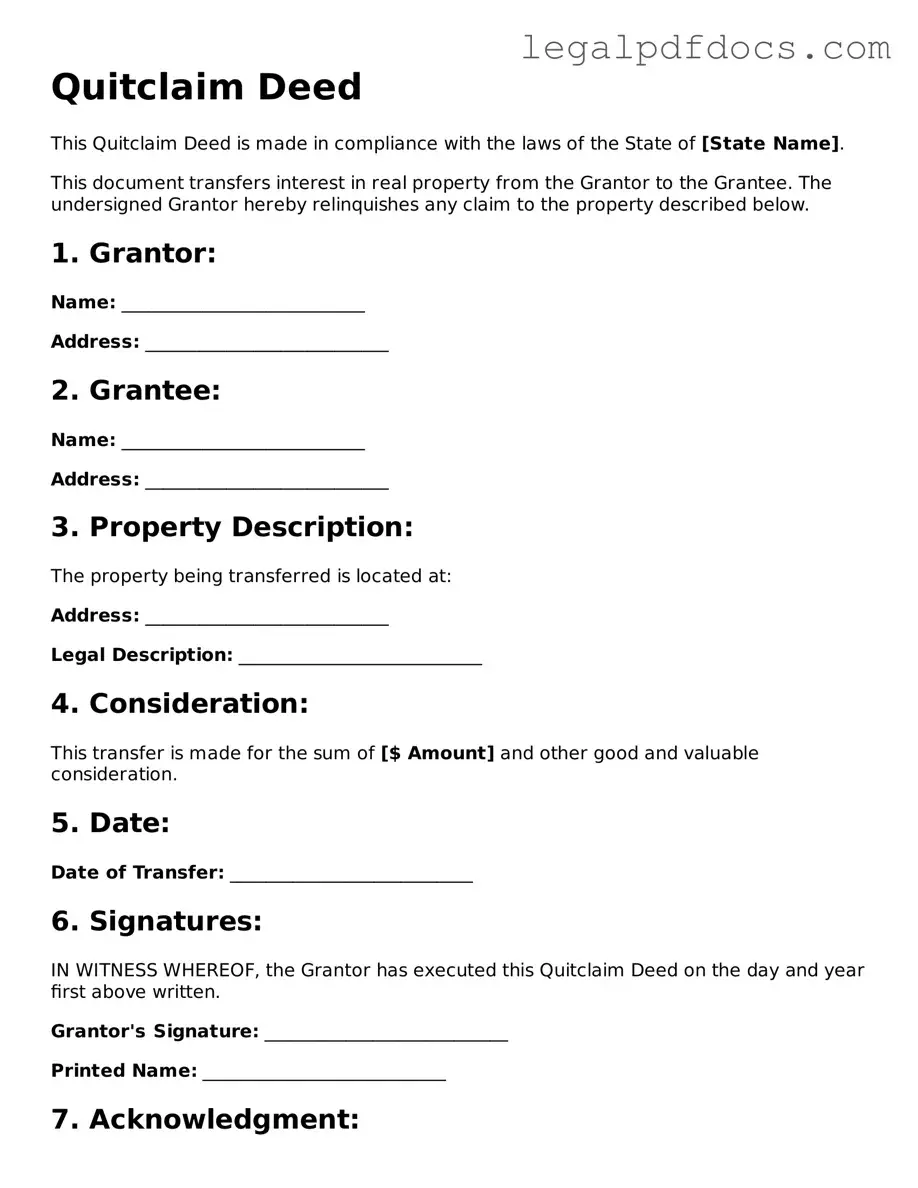A Quitclaim Deed is a valuable tool in real estate transactions, often used to transfer ownership of property without the complexities that accompany other types of deeds. This form allows an individual, known as the grantor, to relinquish any claim they may have to a property, transferring those rights to another party, referred to as the grantee. Unlike warranty deeds, which guarantee the grantor's clear title to the property, a Quitclaim Deed provides no such assurances. It simply conveys whatever interest the grantor holds, if any, at the time of the transfer. This form is commonly utilized in situations such as divorce settlements, property transfers between family members, or clearing up title issues. Importantly, while it is straightforward and can often be executed without the need for legal assistance, parties involved should understand the implications of using a Quitclaim Deed, particularly regarding liability and ownership rights. The simplicity of the Quitclaim Deed makes it appealing, but it is essential to approach its use with caution and awareness of the potential risks involved.
